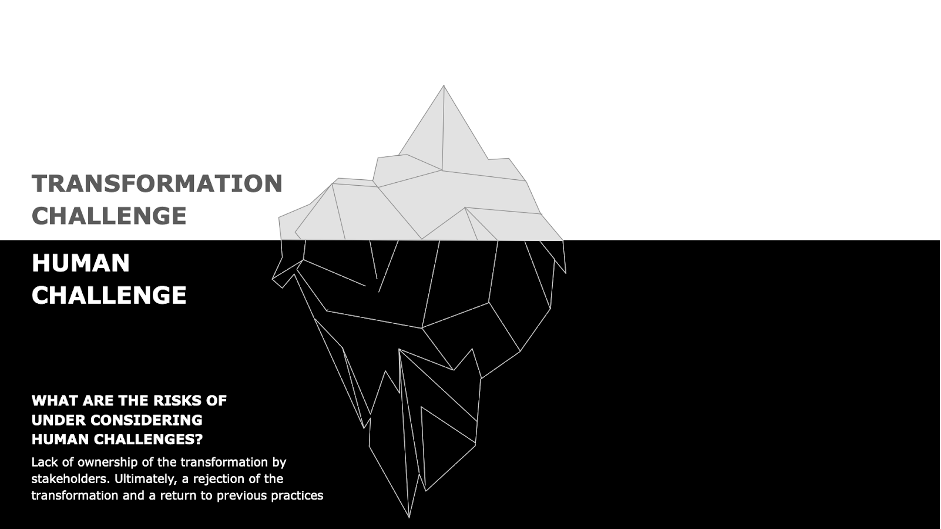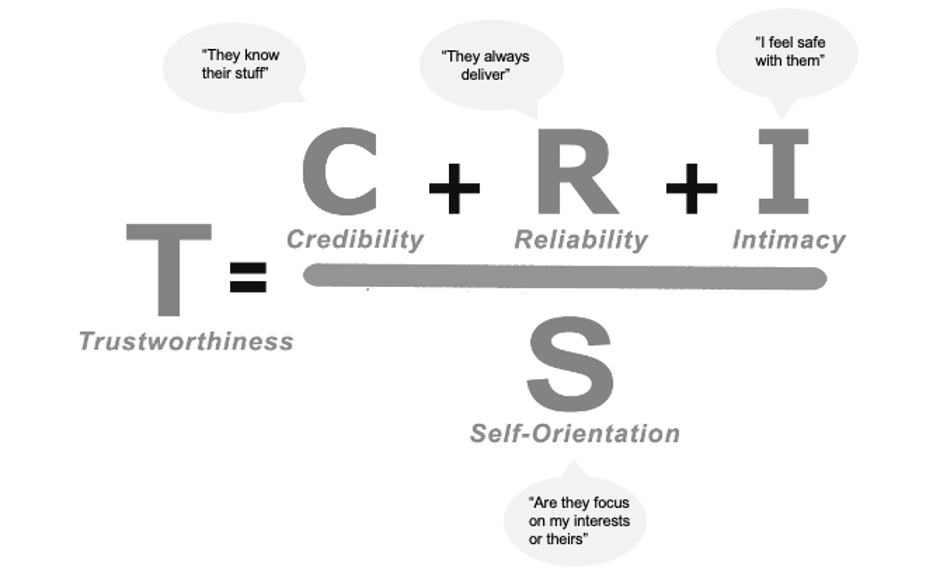How to apply Change Management best practices and limit 'allo blah blah'?
Last week, I had the chance to give a lecture at Toulouse Business School (MBA) about change management in organisations. I met an amazing group of 10 professionals who showed great interest in this lecture and kept engaged all along the day. In fact, they got hooked by the case study and its stories. The characters' personalities were captivating and their mindsets / openness for change were a subject of debate between the students. In this article I share some key takeaways from this lecture and make a link to the “allo blah blah” jobs world that we describe in our book.
Business transformation drives the other transformations
We can highlight 4 types of transformation initiatives within companies. In each category, there are many generalist or specialist consulting firms offering their services to support companies drive their transformations.
- Business Transformation: This one is usually the agenda of the CEO and entails a strategic change of the business. For example creating a new business model or changing the existing one, entering a new market or country or sector, …etc.
- Operational Transformation: This one is the agenda of the COO and entails an operational change in the value chain of the company. It is usually based on the Lean principles and aims for more agile and efficient operations.
- Digital Transformation: This one is on the agenda of the Digital Transformation Officer (DTO). Its goal is to adopt new technologies coupled with new ways of working (agile methodology, design thinking, ..) in order to deliver untapped value very quickly. The more famous ones are the data transformation where companies want to leverage this “new oil” as a driver for their competitiveness.
- IT transformation: This one is on the agenda of the CIO. Its goal is to deploy (or upgrade) new IT tools within the company such as ERP for supply chain management, PLM for design configuration management or MES for manufacturing operations, ..etc.

These transformations are not mutually exclusive. The business transformation drives the rest of the other transformations. In fact, when you create/buy a new business, you need to transform its operations, upgrade/deploy IT systems and leverage digital technologies to stay competitive. Besides, you can imagine that digital transformation can create a business transformation by creating new products or services.
Human stakes are at the heart of any transformation
Regardless of any type of transformation, the human factor is paramount. Through our experiences, we noticed that this aspect is difficult and neglected at the same time during change initiatives.
It is difficult because of the human mindset and behaviour complexity. It is neglected because the intermediaries in charge of change management (project managers/ etc) lose the big picture of the transformation and then all that is left for them is “box ticking” (read “bullshit jobs” by David Greaber) .
For example, in the case study, there was a tough, yet highly skilled employee. When the students read the case for the first time, many of them just thought he needed to be fired or removed to somewhere else. Why? Because he was responsible for a strategic area of the business, they thought the easiest solution would be to remove him, discarding all his experience and knowledge he had. The reality is far more complex than that. As a manager or consultant, you need to face such personalities with both change management toolkits but also with a lot of empathy to get the best out of them. Finding creative ways to motivate them to change their behaviour into a positive attitude is what will make a difference in any change management programme. Time proved that this employee was worth keeping in that area.

Unmanaged change create cynical employees ending up doing more of ‘allo blah blah’
We have also faced a situation of business transformation in a large bank where the top management decided to merge two divisions and then unmerge them three years later, when the new CEO came in. You can imagine the other transformations that were done and undone following these two strategic decisions. Unexplained top-down decisions and rushed ‘u-turns’ from the top management create more ‘allo blah blah’ jobs held by people who become cynical about new changes, show more resistance and/or resign quietly from their jobs by doing the bare minimum. During the lecture, a student mentioned the example of another company he worked for which forced its employees to adopt a new IT tool or ask them to leave the company. Such change practices create traumas within the organisation and push people to disengage.
Lack of trustworthiness kills any change initiative and generates more ‘allo blah blah’
Do you know the Trust equation? It was first introduced in 2000 by David Maister. It factors into a formula the main aspects of human relationships when working together, leading a change programme or simply doing business (see below). In the formula, self-orientation (or hidden agenda) is the only factor in the denominator and that shows its importance against the other factors. As a change agent, you need to score high on all the factors in the equation to build trustworthiness and infuse healthy change.
As an employee, you can also use this formula to assess who you can trust in your organisation. For example, your relationship with your boss by asking the question: “Will this person have your back if ‘$hit hits the fan’ or things go wrong ? Yes / No”
Unfortunately, trustworthiness is rare nowadays. The answer is NO most of the time. This creates an insecure environment for employees and therefore generates a lot of ‘allo blah blah’ meetings/emails as explained in our book.

If you are interested to know more about ‘allo blah blah’ jobs or the “change management” topic, you can find more content in our book. It will allow you to know how to better understand/engage with employees, how to reduce the number of useless meetings, how to execute change management more effectively and also better operate in your job/ with your teams and more broadly in your life.
Hadi